In business management, we’re familiar with the term financial audit. Some provisions standardize and homogenize financial audits. This is done so that investors can compare the performance of companies anywhere with the same benchmark. The term audit is also known in corporate communication, but it is not as standardized, strict, and structured as a financial audit.
The purpose of a communications audit is not an assessment of the company’s overall performance but specifically for its communication aspect. Even so, auditing is still an activity that cannot be carried out carelessly. The goal is the same, namely a directed and structured evaluation to improve the performance of the communication procedures that have been carried out. In contrast to financial audits, the frequency of communications audits is lower, as it is not carried out on a regular schedule every year but in accordance with the needs of company leaders.
In its simplest form, a communications audit is conducted prior to undertaking a planned communications program or campaign. In this case, the audit aims to assess the organization’s readiness in carrying out the program, determine the issues raised, and set benchmarks for success. Thus, the audit is the first step which is then continued with the setting of objectives, planning, implementation, measurement, and success, ending with a conclusion. Joep Cornelissen put forward this process in his book entitled “Corporate Communication”. The method used is usually based on SWOT analysis, namely the assessment of Strengths, Weaknesses, Opportunities, and Threats.
Often, the need for a communications audit is marked by symptoms that indicate the existence of internal gaps within the organization. Statements such as “What does the finance department do, our work with them never ends”, or “Director’s instructions are not understood”, and others must be observed by the leaders of the organization because it means there are internal problems. If not handled immediately, it will result in a bad working atmosphere, making employees uncomfortable working and eventually moving to other companies.
To trace the root of the problem, it is necessary to conduct a communications audit that is oriented towards the recipient, not the sender of the message. Because a communication gap exists due to the failure in sending the as intended. Communication audit indicates the leadership’s commitment to improve communication within the company and willingness to listen to what employees and stakeholders complain about. Doorley & Garcia’s formula of Reputation = Performance + Behavior + Communication also applies internally.
Communication, performance, and behavior must go hand in hand. A complete audit does reveal not only deficiencies but also provides recommendations for improvements that need to be made. In contrast to financial audits, examining communications efforts through audit does not have to involve external parties, although audits conducted by competent external parties will be more objective and credible.
Both Directions
While there is no standardized communications audit as a generally accepted guideline, there have been some attempts to establish standards. Among them were developed by the International Communication Association (ICA), based in the United States. In accordance with the organization name, this audit was known initially as “ICA Audit” but was later changed to “Communication Audit Survey” (CAS).
In van Riel and Fombrun’s book entitled “Essentials of Corporate Communication”, it is explained that CAS focuses on three aspects. First, an assessment of the amount of information received. Second, the assessment of the amount of information sent. Third, the feedback received. From this audit, data were sought on the timeliness of information delivery, the tonality of communication climate, the communication channels used, and the level of employee satisfaction.
It has been more than a year that the work environment has been characterized by non-ideal communication. In a pandemic and work-from-home (WFH) atmosphere, it is necessary to consider conducting a communications audit. To what extent have largely online communication achieved its goals? It is essential to examine the extent to which company policies have provided peace and suppressed stress as low as possible.
In the “Handbook of Public Relations” edited by Robert L. Heath, it is said that James Grunig’s theory of symmetrical two-way communication is also applied in internal communication as a feature of Excellent Public Relations. In this case, communication between management and employees is symmetrical, not one-way from top to bottom (top-down).
Noke Kiroyan
Chairman & Chief Consultant, Kiroyan Partners
This article has been published in PR Indonesia magazine 76th Edition, issued on July 2021, page 53.
Download the clipping here.



